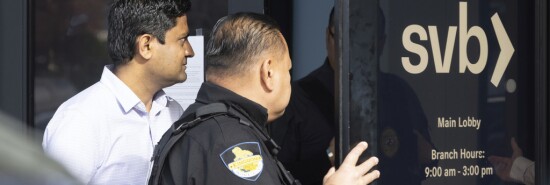
Silicon Valley Bank failed because it bet the money printer would never stop
Tiana Lowe
Republicans and Democrats may posit their own political reasons why Silicon Valley Bank collapsed like a dying star — a “woke” obsession with ESG, corporate greed, venture capitalists orchestrating a bank run — but the real reason is much scarier, if only because the entire finance industry has bought into the delusion. From its nondiversified choice of clientele to its ultimately shortsighted “long term” investing strategy, SVB was guided by the pipe dream that the money printer would never stop.
Recall that for over a decade, the federal government and Federal Reserve conducted the experiment of quantitative easing and near-zero interest rates despite the longest bull market in history. The coronavirus pandemic kicked the study into overdrive, with two presidents adding $6 trillion in new spending and the Federal Reserve financing the deal, printing 40% of all U.S. dollars in existence in a three-year time span.
SENATORS MAKE CASE FOR FEDERAL RESERVE INDEPENDENCE
The result of this unprecedented hypothesis put to the test? Well, the quantity theory of money — and for that matter, centuries of classical economics — held true. Prices have risen 15% since President Joe Biden took office, an inflation rate more than six times higher than the Fed considers acceptable.
Yet despite the predictable result of blowing out the money supply while artificially constraining economic output, the entire professional finance class cleaved to the delusion that whatever inflation that just so happened to occur amid a record-breaking expansion of the money supply was “transitory.” This includes SVB, which based its entire long-term investment strategy on the obvious fiction that the Fed would keep interest rates near zero despite inflation surpassing 6%.
So what was the strategy? Back when the Fed artificially suppressed interest rates, SVB bet on U.S. Treasurys, which gave a safe, constant, and higher-than-zero return on investment. However, when the Fed jacked up the federal funds rate, new Treasury yields rose with it. If SVB was simply letting the bonds they purchased reach maturation, that would be one thing, but when pressed for cash, SVB would have had to sell its bonds, yielding less, for less money than newer bonds on the market, which yield more.
Other, actually solvent banks would hedge against the exceedingly obvious risk by the end of 2021 that the Fed would raise interest rates, but SVB did not. Instead, the chasm between the yields of SVB bonds and those sold during the Fed’s tightening cycle created a net loss on SVB’s balance sheet, and in a fatal blow to the bank, its clients finally noticed.
Anyone with a pulse and two functioning brain cells to rub together could guess putting the money printer on turbo would result in ruinous inflation and that the Fed would be quick to raise rates after Jerome Powell secured his second term from a Democratic-controlled Senate. Zero interest rate policy — beyond leaving investors with cash to burn on moronic gambits such as FTX and WeWork — would incentivize strategy dependent on the Fed refusing to combat inflation.
Even now that the Biden administration has bailed out SVB depositors who were knowingly not insured by the FDIC, investors are already demanding that the Fed slash interest rates. So what if inflation remains at 6%? The cycle continues, and the men who hold the pursestrings of the nation have bond prices to force the Fed to inflate. Inflation may rebound, but only the plebeians will pay.
